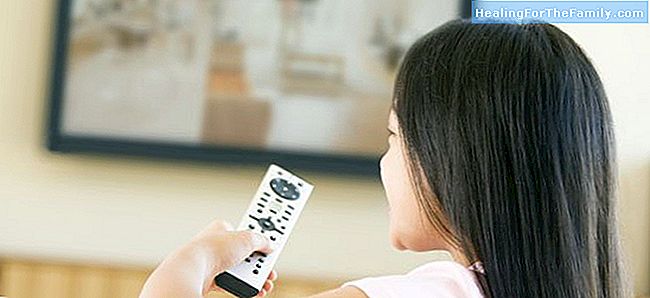Children in front of television
Television can be used as an educational element for children since it simultaneously uses different ways of offering information, stimulates both sight and hearing, can be somewhat participatory , if we have the opportunity to speak with the family about what we are seeing, and finally, it offers m
Television can be used as an educational element for children since it simultaneously uses different ways of offering information, stimulates both sight and hearing, can be somewhat participatory , if we have the opportunity to speak with the family about what we are seeing, and finally, it offers messages and knowledge quickly.
There are some programs with a high educational content that are very useful for children because it allows them to expand their knowledge while they entertain, such as competitions, documentaries and certain programs that help to develop skills or transmit positive values. The key is to select what we want our children to see without putting the television, simply because we just entered the house.
Television, a two-sided coin for children

And television can not supplant family life. The resource of turning on the television should not only focus on filling a gap and it is an important mission of parents to teach our children to use this device correctly: selecting programs, talking about the effect of advertising resources, offering alternatives and detecting possible harmful effects on our children.
In 1996, the General Assembly proclaimed on 21 November, World Television Day en, commemorating the date on which the First World Television Forum was held at the United Nations in 1996. States were invited to They will observe World Television Day by promoting global exchanges of television programs focused on issues such as peace, security, economic and social development and the promotion of cultural exchange.The effect that this device can have on children or adolescents depends on the correct use made of it, mainly the content of the programs and the time spent watching television. The contents have effects of influence and persuasion in the short term in children, while in the long term the effects are directed mainly to the cognitive area. The child learns in large part by imitating the people who are more interesting or attractive to him. These people can be their own parents or other characters that are within their reach. Therefore, these models can have important consequences on their future behavior.
On the other hand, during the adolescence, the reflective capacity of the person is developed, and television is not the most appropriate medium for it. However, not the factors that influence the harmful effect of television on children is the excessive time devoted to it. Some statistics describe up to an average of three to four hours a day of exposure to television in children, that is, considering that they spend about eight hours in school, we must assume a close competition between both sources of information. In addition to the fact that the abusive use of television does not encourage the ability to think about children and adolescents, it increases the risk that they watch programs in a time slot that belongs to adults. In this sense, it would be necessary to determine the extent to which this strip intended for children is respected.
Marisol New
. Editor of Guiainfantil.com












